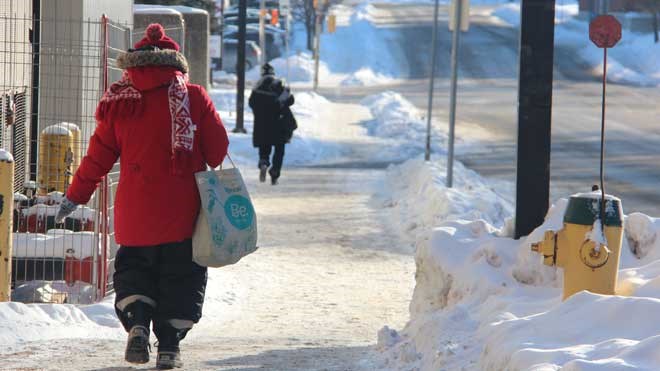Public health officials in Sudbury have issued a warning to residents about frostbite and hypothermia.
"Public Health Sudbury & Districts (PHSD) would like to remind everyone to take appropriate precautions against the cold," said a news release issued Wednesday.
The release said injuries related to the cold can happen at a wide range of temperatures but occur more quickly when it’s colder. Frostbite and hypothermia are the most common and preventable injuries, said the release.
"Suffering frostbite means that skin has actually frozen. In addition to feeling cold, the skin can feel numb and appear white. In more severe cases the area becomes hard, waxy, and can turn white or dark. Body extremities are often the first to be frozen/frostbitten, said the health unit.
In addition, there is a condition called frostnip. This is where a person's skin may appear shiny and rosy, said the health unit. This is a sign that frostbite may occur shortly.
If you see these signs, move to a warmer environment, or protect the skin with layers of clothing, said the health unit.
Public health also warned that hypothermia is a life-threatening condition.
"It occurs when the body is exposed to the cold for a long time and loses more heat than it can generate. The individual could be shivering, drowsy, confused, and have problems speaking, loss of co-ordination and pale and bluish lips. People showing signs and symptoms of hypothermia will begin shivering, but this sign can decrease and disappear in later stages," said the health unit.
Experts advise that a person with hypothermia must be removed from the cold immediately and given immediate attention, preferably by a person with medical training.
PHSD advised that St. John Ambulance (page 233) and the Canadian Red Cross have information on how best to avoid cold-related injuries.
-Check the weather forecast and plan accordingly.
-Limit the amount of time you spend in the cold.
-Dress in layers, with a wind-resistant outer layer. Wear a hat and mittens or insulated gloves. Keep your face warm by wearing a scarf, neck tube, or face mask.
-Wear warm, waterproof footwear.
-Seek shelter from the wind.
-Stay active. Walking or running will help warm you by generating body heat but try to avoid sweating.
-Stay dry. Remove wet clothing if possible and remove or ventilate outer layers of clothing if you are sweating.
PHSD further advised that on very cold days, to check in on neighbours who may be vulnerable to cold due to age, living conditions, health conditions, reduced mobility or isolation.
